To the lecture series English top page
Comments on Lecture 19 "Depth Reversal Illusion"
Comment 1. Answer to the question"
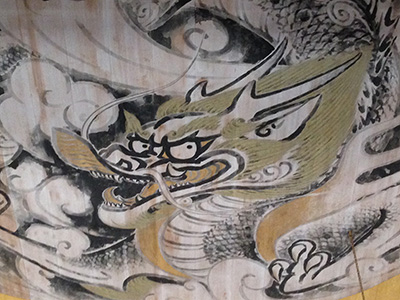
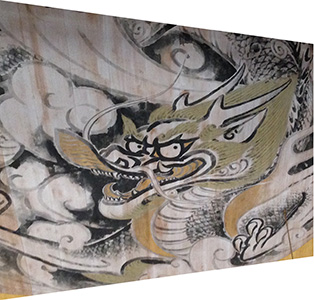
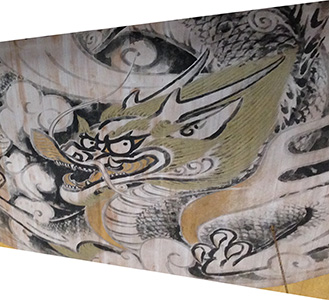
If a face drawn in a picture is looking at the viewer, it remains looking at the viewer wherever the viewer see the picture from. It never happens that the face in the picture changes the gaze toward other directions. So the dragon painted on the ceiling looks at the viewer wherever the viewer look up at the dragon from. This is natural. Hence, the picture of the dragon is not special in this sense.
You may confirm this fact if you see your own portrait picture looking at you.
Comment 2. References on depth reversal illusion
[Reverse Perspective Art]
N. J. Wade and P. Hughes, Fooling the eyes; tromppe L'oeil and reverse perspective. Perception, vol. 28 (1999), pp. 1115-1119.
[Hollow Mask Illusin] For Example,
R. L. Gregory, The Intelligent Eye. Weidenfeld & Nicolson, London, 1970.
[Crater Illusion]
V. S. Ramachandran, Perception of shape from shading. Nature, vol. 331 (1988), pp. 163-166.
[General Testbook]
K. Sugihara, Mathematics in 3D Visual Illusion (in Japanese). Kyoritsu Shuppan Publisher,
Tokyo, 2006.
Comment 3. 3D objects used in the video lecture
(1) Depth reversal wall of cubes
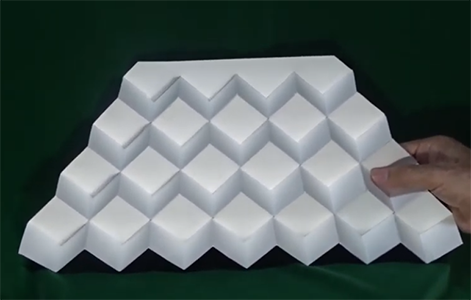
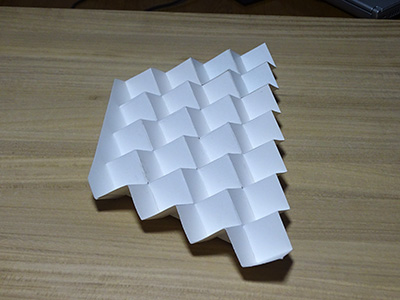 The wall composed of cubes is as shown in the second image. When it is illuminated from below, we perceive the depth opposite to the real depth as shown in the first image.
The wall composed of cubes is as shown in the second image. When it is illuminated from below, we perceive the depth opposite to the real depth as shown in the first image.
A similar 3D structure can be found in the following books.br>
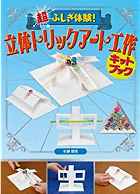
Construction Kit Book of 3D Trick Arts (K. Sugihara, Kinnohoshi Sha Publisher)
This book contains the diagrams of unfolded surfaces of four objects. They are printed in hard paper and the boundaries are perforated. One of them is a wall consisting of cubes.
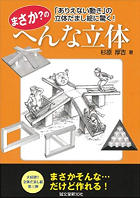
Unexpected Strange Objects (K. Sugihara, Seibundo-Shinkosha Publisher)
This book contains the unfolded surfaces of twenty 3D objects. One of them is a wall composed of cubes. We need to make a copy of the diagram onto hard paper in order to construct the object.
(2) Reverse Perspective Art 1
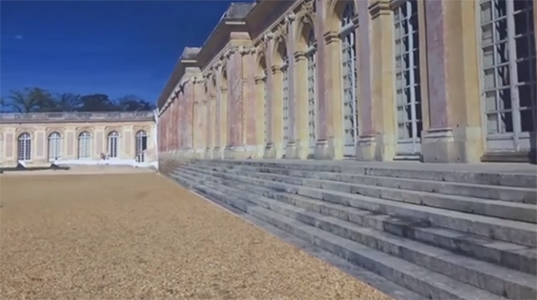
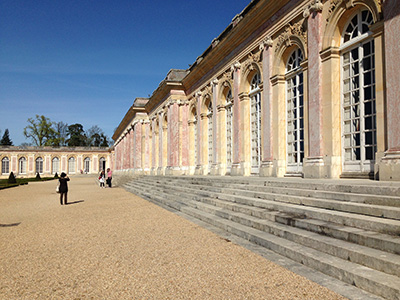
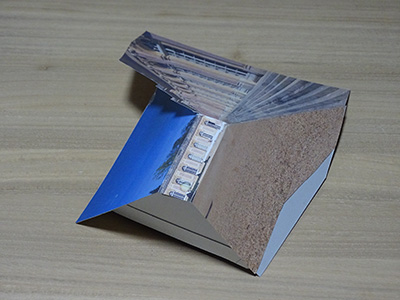
The first image is a snapshot of the reverse perspective art shown in the lecture. This object was made from a photo of a palace in Spain shown in the second image. The farthest building facing toward the camera is kept as it is, while the other part is divided into three areas, the right-side building, the ground and the sky, and they are deformed and pasted on slanted surfaces as shown in the third image.
(3) Waving ocean surface
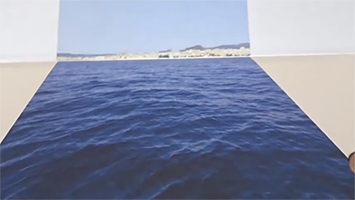
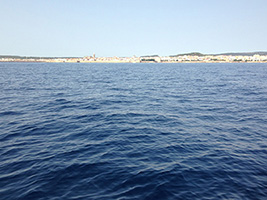
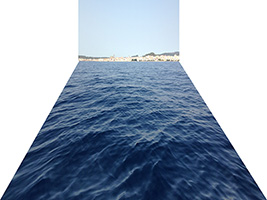
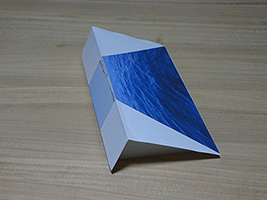
The first image is a snapshot of the video lecture. This object was made from the photo shown in the second image. The image was decomposed into the land and sky area and the ocean surface area. Each area is deformed independently as shown in the third image, and is pasted on slanted surface as shown in the fourth image. As the result, the boundary between the land and the ocean is nearest to the camera, and the ocean surface goes farther from the camera as we go down the picture.
(4) Hollow mask
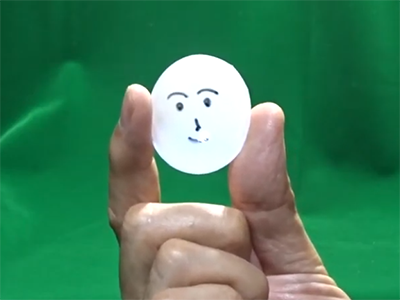
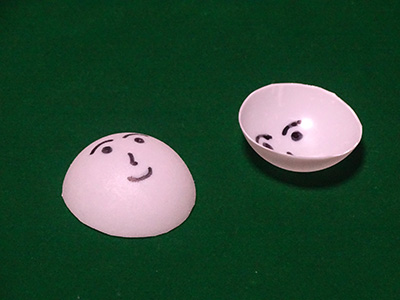 This object was constructed from a ping pong ball. We cut a ball at 1/3 of the diameter, and drew a face on the outer side (left object) of the surface or on the inner side (right object).
This object was constructed from a ping pong ball. We cut a ball at 1/3 of the diameter, and drew a face on the outer side (left object) of the surface or on the inner side (right object).




 The wall composed of cubes is as shown in the second image. When it is illuminated from below, we perceive the depth opposite to the real depth as shown in the first image.
The wall composed of cubes is as shown in the second image. When it is illuminated from below, we perceive the depth opposite to the real depth as shown in the first image.










 This object was constructed from a ping pong ball. We cut a ball at 1/3 of the diameter, and drew a face on the outer side (left object) of the surface or on the inner side (right object).
This object was constructed from a ping pong ball. We cut a ball at 1/3 of the diameter, and drew a face on the outer side (left object) of the surface or on the inner side (right object).